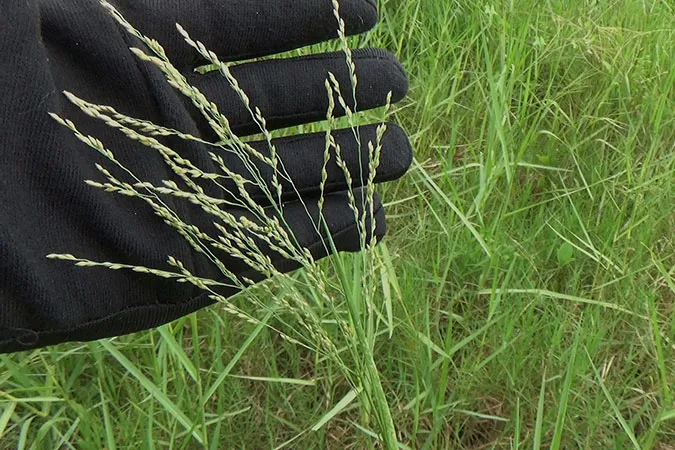Glumo panic grass (Panicum caudiglume) is a species of plant in the Poaceae, herbaceous, erect, up to 100 cm tall, cylindrical stems, green or yellow or reddish in color, segmented, shrub forming in forests and agricultural lands with a lot of sunlight.
P. caudiglume has ribbon-shaped leaves, long and slender, pointed tip, green, hairy, a bright line in the middle and flowing linearly, prominent spine.
The seeds are in long panicles at the top end of the stem, green and branched. The seeds are ovoid elongated, pointed tip, green or yellow and have a stalk.
Glumo panic grass tolerates a wide variety of soils but prefers wetter soils with high clay and sand content, is drought and flood resistant, grows evenly over grasslands rather than forming dominant stands or single shrubs.
Kingdom: Plantae
Phylum: Tracheophyta
Subphylum: Angiospermae
Class: Liliopsida
Order: Poales
Family: Poaceae
Subfamily: Panicoideae
Tribe: Paniceae
Subtribe: Panicinae
Genus: Panicum
Species: Panicum caudiglume
P. caudiglume has ribbon-shaped leaves, long and slender, pointed tip, green, hairy, a bright line in the middle and flowing linearly, prominent spine.
The seeds are in long panicles at the top end of the stem, green and branched. The seeds are ovoid elongated, pointed tip, green or yellow and have a stalk.
Glumo panic grass tolerates a wide variety of soils but prefers wetter soils with high clay and sand content, is drought and flood resistant, grows evenly over grasslands rather than forming dominant stands or single shrubs.
Kingdom: Plantae
Phylum: Tracheophyta
Subphylum: Angiospermae
Class: Liliopsida
Order: Poales
Family: Poaceae
Subfamily: Panicoideae
Tribe: Paniceae
Subtribe: Panicinae
Genus: Panicum
Species: Panicum caudiglume
